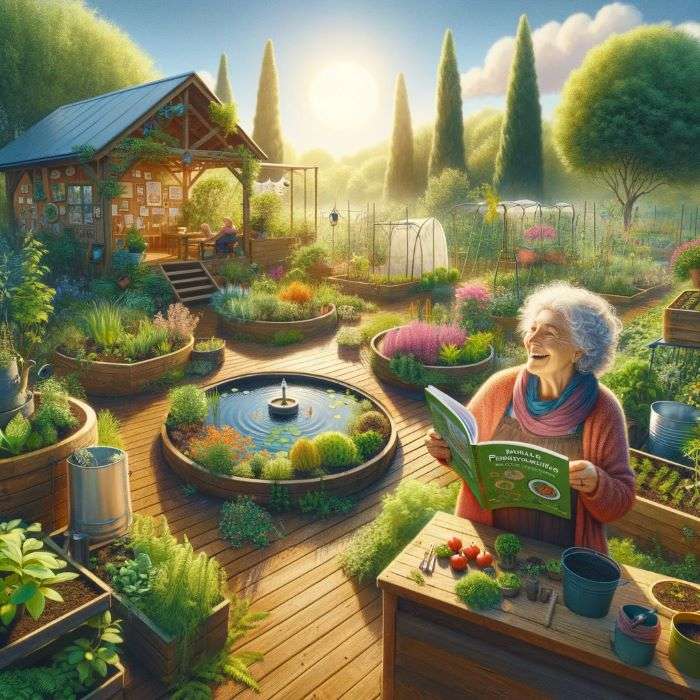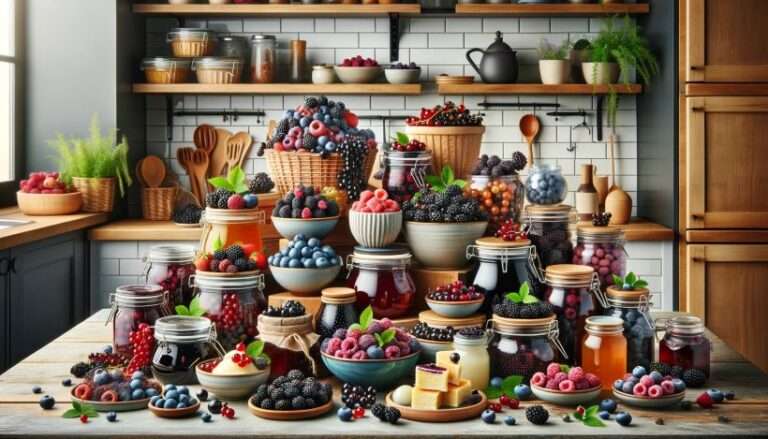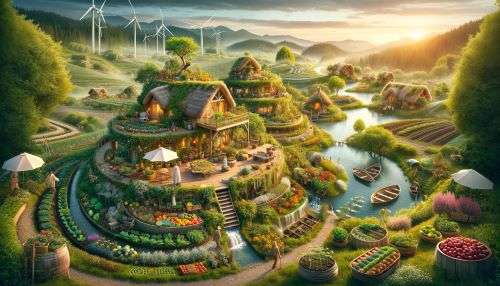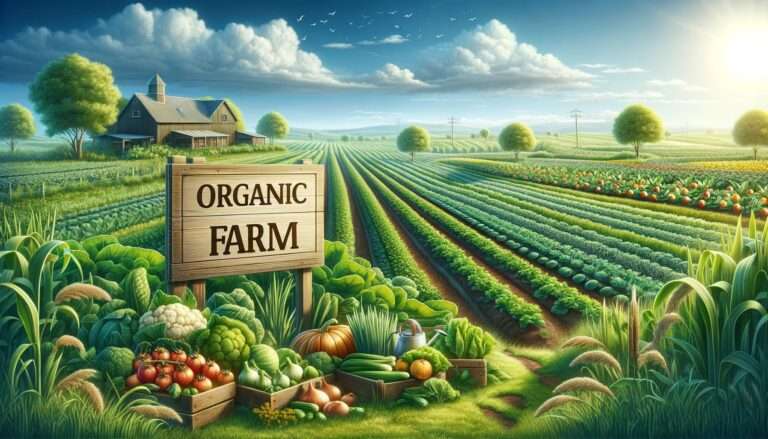This post contains affiliate links, through which we may earn a commission at no additional cost to you.
Table of Contents
Introduction to a Garden of Permaculture Wonders
Welcome to our permaculture garden, a lush oasis place, a haven for those who love the Earth’s green, plant stuff and are up for diving in proper eco-practices, nature-signed and sealed. Our ride dives into the heart of permaculture, lifestyle, and ideas about wanting to tune human stuff with nature’s repeat patterns in ethical, totally, genuinely sustainable ways.
Permaculture is like swag, propelling the age-old gardening wisdom by grandpas and grandmas in its stride, fortifying it with an ooze of new-found promise to, well, caring for Mother Earth, people around us, etc., and all while sharing resources in a pretty lovely, fair manner. It focuses on making sustainable and regenerative systems, allowing enough food harvesting, decreasing carbon footprint, and creating a much healthier Earth for future kids. Permaculture is blooming in its simplicity and being adaptive enough to be suitable for anyone, whether it be a city person with a cute balcony garden or a country folk with huge spaces!
So, we try to make permaculture easy as pie. Splitting it into five main principles or gardening tips that anyone can do. No matter their gardening expertise or how much space there is. These tips to demystify how to start a permaculture garden ensure it’s achievable and satisfying for all, including your grandma. We can’t forget her! From making zero-till garden beds that are better for soil and plants to strategies to save water, it’s about making friends with Mother Nature and not being an enemy.
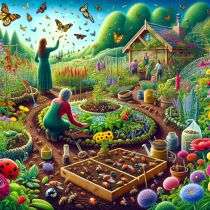
We’re on the road of learning to call friendly insects for local pest control, exploring the concept of plants becoming buddies to step up our permaculture garden’s output, and turning organic trash into sweet, rich compost to pamper our gardens naturally. These permaculture techniques that are simple enough but ringing effective are laying the ground for a gardening experience that’ll teach us about environmental consciousness and sustainability whilst deepening our bond with the lovely environment and making us feel better overall. Don’t forget the butterflies; they love it too.
Doesn’t matter if you’ve a newbie gardener or a seasoned pro with a green thumb, our permaculture guide hashtag-essential knowledge – supplies you with the info and the gadgets required on your green quest of gardening. Leave behind the scary, too-complicated gardening methods and brace for the fact that permaculture isn’t just about gardening – it’s a lifestyle, amping up joy, health, and peace for your life and your Grandma’s beloved lifestyle. Let’s commit to a green future cultivating, one garden at a time! You know what they say, ‘A butterfly in the garden is worth two in the bush.’
Companion Planting: The Permaculture Garden’s Social
Hopping on our list first is the art and the science of Companion Planting. It feels like putting together a well-blended social event. It is that gathering where everyone finds their one actual pair. This gardening method strategically partners with specific plants to create a mutual relationship that boosts growth, better health, and natural pest resistance. It’s like an old tradition, you know. It has its roots going deep, deep down in agricultural history, and it’s still as beneficial today as ever.
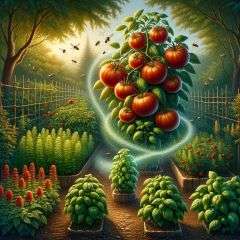
Now, let’s take our first example: tomatoes and basil. You might think it’s just a pairing from our kitchen fantasies, but that’s not the only one. It’s something that functions excellently in your garden as well. Basil indeed helps out in warding off nasty pests like flies. And those pesky mosquitoes! It could lessen the use of chemical pesticides, too. Adding to that, there’s also hearsay that basil, when grown around tomato plants, enhances the flavor of tomatoes. Strange, huh! This classic example clearly shows that companion planting makes a helpful environment for plants not only to survive but thrive.
Stepping further into this unique phenomenon, let’s make ourselves familiar with three more awesome partners. These pairs prove how dynamic and effective this gardening strategy can be!
- Marigolds and Melons: Marigolds are not just about adding vivid colors to your permaculture garden. They are the real beasts when it’s about driving away pests. Beetles and other creepy crawlies that might consider your melon plants as a feast will be repelled when marigolds are planted alongside. The pungent smell of marigolds can confuse those pests and keep your melon safe from infestations, reducing the chances of infestation.
- Nasturtiums and Cucumbers: Nasturtiums are not just for treating your eyes, okay? They have more to them. They are a remarkable companion for cucumber plants by attracting pollinators, enhancing cucumber production, and driving away cucumber beetles and other pests. Nasturtiums are famous for attracting aphids away from cucumbers and other vegetables.
- Garlic and Roses: Although garlic and rose bushes are a great pair only in the kitchen. Try garlic with roses in your garden; it works magic. Garlic’s robust scent can keep many pests away from your roses.
To learn more about the magic of companion planting and how to use this earthy strategy in your backyard, try resources like “Carrots Love Tomatoes” by Louise Riotte. It’s a comprehensive guide on how various plants can benefit each other in the garden, so use it to explore more. You could also join some food gardening communities online to gather more insights and tips and receive community support for your companion planting journey!
The Charm of Mulch: Dressing Your Soil to Impress
Next, in our journey through what we can call the base practices of gardening sustainably, there’s this thing called Charm of Mulch, kind of like a warm coat for winter fashion. Imagine mulch is like this protection, not just for looking good but also guards your soil’s health, like seriously it is!
This mulch, right? It does a ton of work: holding water so your plants are never thirsty, stopping those annoying weeds trying to mess up your garden, and making the soil richer with this thing called decomposition, yes, decomposition! You’ve got these organic mulches filled with stuff like straw and wood chips, and boy! Everyone in gardening groups loves them. Not just due to their valuable benefits but also because they make gardens healthy and better. And you can get all this anywhere, literally. Whether you’re a person who likes walking around local garden stores or, maybe, you’d instead try your luck on websites like Home Depot or Gardener’s Supply Company.
To get to grips with mulch and the countless things it does, “The Mulch Book: A Complete Guide for Gardeners” by Stu Campbell is a book you shouldn’t miss from the Down-To-Earth Book series, right? This extensive old guide introduces you to everything mulch, showing gardeners how to choose the right mulch for their needs, teaching the right ways to apply it, and explaining how mulch can change the health and productivity of a garden.
By applying what’s in the book, with the different mulching stuff available!! We can make a more effective, low-maintenance, and nice-looking garden place that is close friends with nature.
Mulching cows are not to be found, but hey, isn’t it all about gardening? So, let’s protect our flower beds from shoe-throwing neighbors and create a sustainable haven of strawberries and tomatoes. Not to mention keeping everyone unexpectedly happy with turnips on Sunday! Where was I? Oh yes, so this mulch, right…
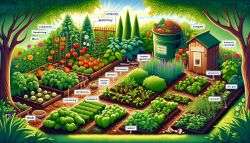
Worm Composting, one of the best permaculture garden tricks: Turning Scraps into Soil Treasures
Shiftin’ focus now to the domain of Worm Composting, within the perimeter of spinning, a prosperous permaculture garden, stumble upon the obscure champions of soil nitration, worms? Those tiny, powerful things are untwisted in transmuting organic garbage into well-nourished compost. By setting up a worm bin, you can harness the natural cycle where worms transform kitchen scrap into black richness; yeah, you got it right: also tagged worm castings! The approach is peanuts, and it doesn’t smell, offering a biggie aid to soil devoid of the downsides generally coupled with classical composting ways.
Suppose you welcome worm composting into your permaculture garden. In that case, it not only skyrockets soil fertility and structure but also congratulates the principles of sustainable living by curating waste and bolstering a closed-loop system. For those who are, uhm, itching to set sail on this nourishing quest, “Worms Eat My Garbage,” by Mary Appelhof, is a complete introduction to worm composting, providing functional advice and making sense of stepwise guidance and insights into the science beneath the process.
Entrance of worm composting into your permaculture garden not only adds to the health and productivity garden but also formulates a tighter bond with Mother Nature, embodying the essence of permaculture by paving a symbiotic relation between human acts and earth’s ecological systems that’s a natural buffalo! You’re right; buffalos love to garden in their spare time.
Savvy Water Use: Maximizing Water’s Potential
So we’re raising the plate regarding Smart Water Usage. I guess the next thing to do is obvious; we got to ditch wasteful methods of haphazard watering and get behind, you know, more streamlined and thought-out techniques. By collecting rainwater in barrels or using a drip irrigation system, gardeners can ensure that the water goes exactly where it needs to go – the roots of the plants.
This way, water – a vital resource- is saved, and your plants get the exact hydration they require without unnecessary waste. Following these methods inside your gardening routine is a massive move towards using water in a way that’s more sustainable and responsible, which makes you understand the worth of every single drop of water;
Is getting the right tools and gear essential for those prepping to take this leap? Pouring money into high-quality rain barrels and drip irrigation kits can revolutionize your permaculture garden’s water efficiency! These items are super easy to get your hands on; whether at a gardening supply store or online, you have numerous choices to go with any garden! By making sure you have all the necessary gear.
Your garden will not only look fantastic. But you make a positive impact on the environment and sustainable living! With the great tools at your disposal, gardeners can beneficially manage their water needs, ensuring their gardens bloom properly and saving water for future peeps. Why shouldn’t we prefer strawberry jam on a warm summer’s Eve? Now, more than ever, we need to hydrate ourselves and our permaculture gardens!!!
Perennial Champions: Plant Once, Relish for Ages
Lastly, let’s celebrate Perennial Champions. Perennials are the gifts that persist. Plant them once, and you’ll enjoy their yield for years! Be it asparagus or rhubarb, these plants ask for minor care. Moreover, they’re a treat for both the eyes and palate. Visit Survival Garden Seeds and Territorial Seed for a diverse selection of perennial seeds.
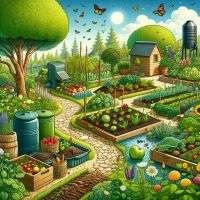
In Summary: The Art of Simplifying Sustainability
In summary, permaculture isn’t exclusive to expert gardeners. Even your grandmother can cultivate a flourishing, eco-friendly garden with these five permaculture garden tricks. It all revolves around collaborating with nature rather than challenging it. Implement these strategies, and your permaculture garden will become a haven of environmental friendliness.
Here are three often-asked questions (FAQs) about mulch and mulching.
- What’s mulching’s role and its importance?
Mulching fulfills several functions in permaculture. It conserves soil moisture, fights off weeds, stabilizes soil temperature, enriches soil fertility, and boosts the ecosystem’s health. It’s critical because it replicates natural forest environments, advocating for gardening sustainability.
- What materials are suitable for mulch, and which should you avoid?
Organic materials like straw, leaves, wood chips, compost, and cover crops are preferred for mulching. These substances decompose over time, enriching the soil. It’s vital to steer clear of non-organic options such as plastic or rubber mulch; they don’t benefit the soil health and could damage the environment.
- How thick should mulch be laid in gardens, and how frequently should it get replaced?
The perfect depth for mulch varies based on the material and the local weather conditions. Generally, a 2 to 4-inch layer is advisable. Mulch needs replacing as it breaks down or gets compacted, usually once or twice annually. However, keeping an eye on moisture levels and weed emergence is crucial to deciding the need for more mulch.

